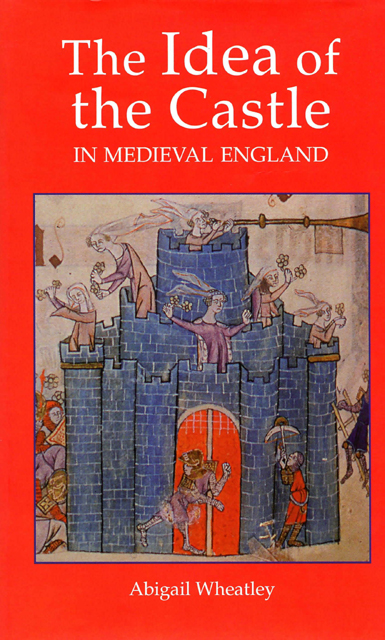Summary
The castle had a dominant presence in medieval society, both physically and ideologically. Controlled by elites, castles towered over medieval villages and towns and were sites of judgement and administrative control. However, castles were also depicted over and over again in the medieval arts as heraldic devices, as pastry or paper table decorations, on seals (see Plates 1, 2 and 3) and as large-scale props in pageants. They featured figuratively in sermons, theological treatises and religious lyrics and in manuscript marginalia (see Plate X), as well as in the more familiar contexts of romance and chronicle. To the modern understanding, there is a wide gap between these ephemeral, miniature and symbolic castles and the imposing stone-and-mortar fortresses scattered over medieval Europe and beyond. This book sets out to show that medieval thinking on these matters was very different.
Numerous studies have demonstrated that medieval ecclesiastical architecture was fully integrated into the intellectual and aesthetic culture of its time. Deliberate resonances were created between the soaring spires of the Gothic cathedral and the miniature pinnacles represented on tombs and reliquaries and in paintings and sacred texts inside the church. Indeed, it is recognized that microarchitecture (as the diminutive, decorative form is known) was an important adjunct to ecclesiastical architecture, expressing its symbolic properties and associations in a particularly concise way. It is precisely this kind of relationship I am seeking to explore in the medieval castle and its artistic and literary representations. I set out to establish the medieval castle as a meaningful architecture, involved in a sophisticated series of ideological relationships with its cultural context. This necessarily demands a rethinking of traditional approaches to the castle in modern scholarship.
The castles of the medieval landscape are, by definition, defensive architectural forms. They are usually considered to have been built with military functions in mind. It is from this point of view that they have most often been approached in modern scholarship. Because defence is such a practical consideration, rooted in engineering, technology and military strategy, it has not often occurred to scholars to treat medieval castle architecture as ideological. By contrast, medieval ecclesiastical architecture has long been understood as a meaningful architecture, which operates at an ideological as well as a practical level. It is appreciated as the highest technological achievement of its period, but also as a vessel for the most important religious ideas and beliefs.
- Type
- Chapter
- Information
- The Idea of the Castle in Medieval England , pp. 1 - 18Publisher: Boydell & BrewerPrint publication year: 2004



